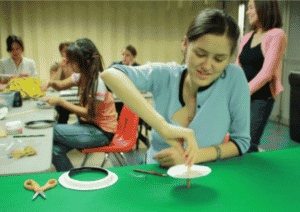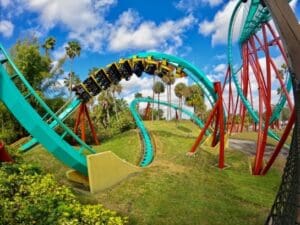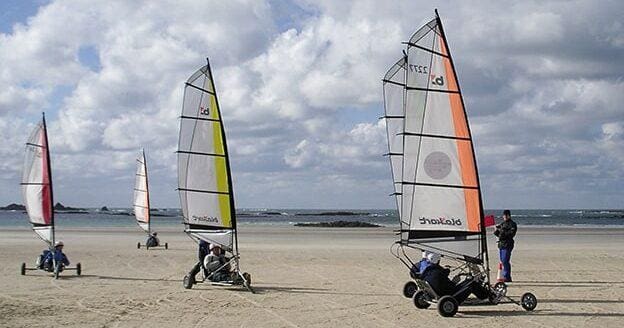Angular acceleration: How much faster or slower a top is spinning over time. (For older participants: The change in an object’s angular velocity over time.)
Angular momentum: How likely something is to keep spinning. If it’s spinning really fast, it has more angular momentum than if it’s spinning slowly. (For older participants: An object’s angular momentum results from its angular velocity and the way its mass is distributed.)
Angular velocity: How many times per second an object spins. A car tire spinning 100 times each minute has twice as much angular velocity as the same tire spinning 50 times per minute.
Gyroscopic effect: When tops are spinning, they resist spinning in a different direction. This is the gyroscopic effect—the tendency of a spinning wheel to resist a change in its orientation.
Momentum: The amount of mass in motion. An object’s momentum depends on how much matter (its mass) is moving and how fast it’s moving. A boulder speeding down a mountain has much more momentum than a marble rolling slowly across the floor, and would require much more energy to stop it. (For older participants: momentum is the product of an object’s mass and its velocity.)








Thank you! Your submission is processing.